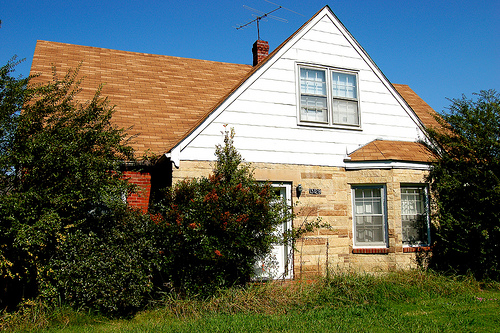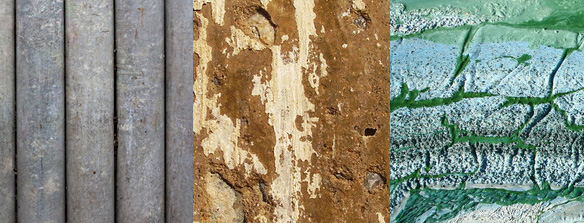What Is Asbestos?

Image source: sarflondondunc
You might know asbestos as the material used in old bullet-proof vests. But did you know that it can be found in your home? Asbestos is a mineral with the structure of thin fibrous crystals. It was mined in the 1800’s. Before the 1980’s, because of its desirable properties, such as strong structural integrity, light weight, chemical resistance, and fire resistance, asbestos was commonly added to construction components such as insulation, ceiling tiles, flooring tiles, roofing tiles, paint, cement tiles, coatings and sealants, and decorative finishes.

Image source: taberandrew
In Canada, the addition of asbestos to construction components halted in the 1980’s. However, many old buildings and houses still contain asbestos.
When asbestos is contained in finished products that are in good condition, it is not dangerous to your health. However, the moment these materials are damaged, asbestos fibres may be released into the air and inhaled into the lungs, causing serious damage and disease to the body over time.
Illnesses Related to Asbestos
Many serious conditions may arise from asbestos exposure. The type of condition a person may contract depends on a number of factors: the concentration of asbestos in the air, the duration of exposure, the type of asbestos, and the way damage was caused.

Asbestos crystal fibres in lung tissue
Image credit: Pulmonary Pathology
Asbestosis
Asbestosis occurs when fibres of asbestos are breathed in. These fibres permanently scar the lungs and make it difficult to breathe. With continued exposure, the scarring gets worse. Asbestosis can lead to further complications, like lung cancer.
Cancer
Asbestos is known to cause cancer, though the exact mechanism through which it does this is unknown. According to the World Health Organization, more than 107,000 people die each year from mesothelioma, an rare form of asbestos-related lung cancer that develops in the lining of internal organs, and asbestosis resulting from occupational exposure. There is also sufficient evidence to confirm that asbestos can cause tumours in the larynx and ovaries.
Pleural Plaques
When pleura (the lining of the lungs) is damaged, pleural plaques can form. These are small, calcified, and thickened sections of pleura. Pleural plaques produce no symptoms and are therefore hard to detect. Continued exposure can cause pleural plaques to expand. This expansion leads to a condition called “diffuse pleural thickening”. In other words, the pleural thickness (i.e. pleural plaque) spreads to large areas of the lung’s outer lining. Diffuse pleural thickening eventually leads to impairment of the lungs. Evidence suggests that people with pleural diseases are at higher risk of developing lung cancer.
Skin Problems
Besides these serious lung diseases, asbestos can also cause dermatological complications. If the asbestos gets into the skin, asbestos warts may occur. These “warts” are actually skin growing around the lodged asbestos fibre, creating callouses. If left untreated, asbestos warts will not stop growing. If these warts occur near organs, they may cause problems such as pinched nerves and blood flow disruptions.
Conclusion

Image source: matthileo
These conditions and many more are all reasons you should be extremely careful when dealing with asbestos in the home. If you suspect there is asbestos in your home, it is best to call a consultant. Do not attempt to remove it yourself, as any action can release asbestos fibres into the air. Keep yourself and the ones you love safe.












